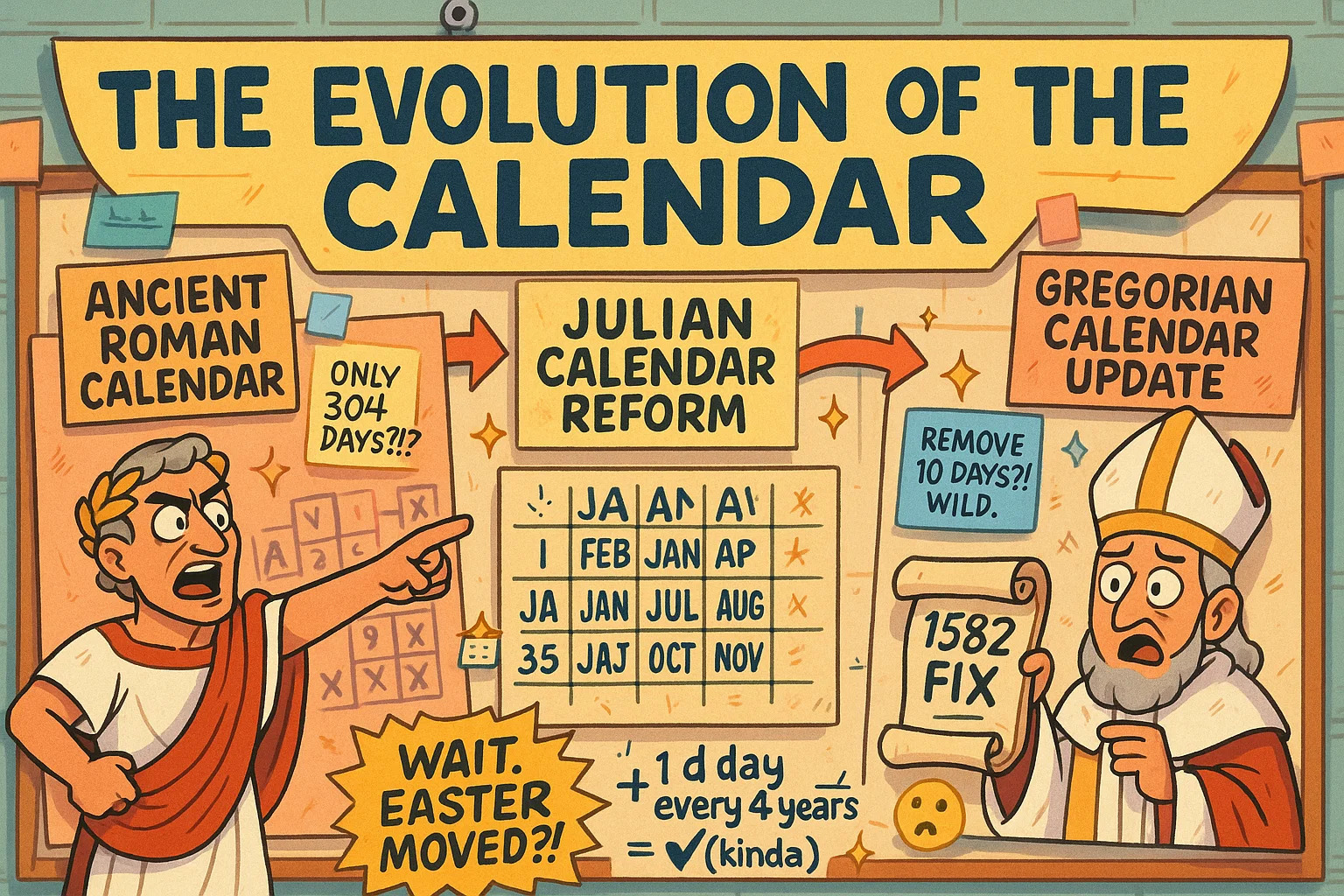In today's fast-paced world, understanding the passage of time is crucial for a variety of reasons. Whether it's scheduling events, planning for holidays, or calculating age with our Age Calculator or measuring time intervals. This tool helps users quickly and accurately determine the number of days between two dates, add or subtract days from a specific date, or measure hours and minutes with our Time Duration Calculator.. It serves as a convenient and efficient resource for professionals, students, and individuals alike who need quick solutions for date-related calculations.
For example, if you're wondering how many days are left until a particular holiday or need to determine the date 100 days from today, a date calculator is the perfect tool for the job. Moreover, it helps avoid the errors that can arise when calculating time manually, especially considering the complexities of different month lengths, leap years, and varying days in a month.
History of the Gregorian Calendar: The Foundation of Date Calculations
Understanding how we arrived at today's widely used date calculator tool requires a brief look at the history of the calendar system. The Gregorian calendar, which is the most widely used calendar in the world today, has its roots in the Julian calendar. This system, based on the ancient Roman calendar, initially had just 10 months, totaling 304 days, but it was inaccurate due to the differences between the lunar year and the solar year.
To address this, Julius Caesar introduced reforms in 46 BC, establishing the Julian calendar, which had a 365-day year and a leap day every four years to account for the extra 0.25 days in the solar year. While this fixed the calendar’s accuracy for a time, it eventually led to slight shifts over centuries due to the leap year rule not being perfect.
In 1582, Pope Gregory XIII made further adjustments to correct this drift, introducing the Gregorian calendar. This new system established a year length of 365.2425 days, eliminating 10 extra days in the calendar and introducing the leap day every four years, except for century years that are not divisible by 400. This correction helped ensure that the vernal equinox fell consistently on the same date, which is essential for determining the dates of important events, particularly Easter.
The adoption of the Gregorian calendar was gradual, with many countries adopting it slowly over the centuries. By the 20th century, however, it had become the global standard.

The Importance of Holidays in Date Calculations
Holidays are special days set aside for commemorating important events, cultural celebrations, or religious observances. The significance of holidays varies from country to country and even region to region. In the United States, for example, federal holidays are recognized by the government and affect the daily lives of citizens, particularly employees of federal institutions.
The concept of holidays is closely tied to the calendar system, and understanding their dates and durations can be crucial for time management and planning. Fixed holidays occur on the same date every year (e.g., Christmas on December 25th), while floating holidays change their date annually, depending on the calendar. A date calculator can be particularly helpful in determining the exact day of the week a holiday will fall on in future years.

U.S. Federal Holidays for 2024 and 2025
Below is a list of U.S. federal holidays for 2024 and 2025, which are often used in date calculations for work, school, and other activities:
U.S. Federal Holidays for 2024:
-
New Year’s Day: January 1
-
Martin Luther King Jr. Day: January 15
-
President’s Day: February 19
-
Memorial Day: May 27
-
Juneteenth Day: June 19
-
Independence Day: July 4
-
Labor Day: September 2
-
Columbus Day: October 14
-
Veteran’s Day: November 11
-
Thanksgiving: November 28
-
Christmas: December 25
U.S. Federal Holidays for 2025:
-
New Year’s Day: January 1
-
Martin Luther King Jr. Day: January 20
-
President’s Day: February 17
-
Memorial Day: May 26
-
Juneteenth Day: June 19
-
Independence Day: July 4
-
Labor Day: September 1
-
Columbus Day: October 13
-
Veteran’s Day: November 11
-
Thanksgiving: November 27
-
Christmas: December 25
A date calculator is invaluable for planning around these holidays, helping you determine working days, vacation periods, or the number of days left until the next holiday. For more handy tools to plan your schedule, track dates, and manage daily tasks, visit our Everyday Life Tool.

